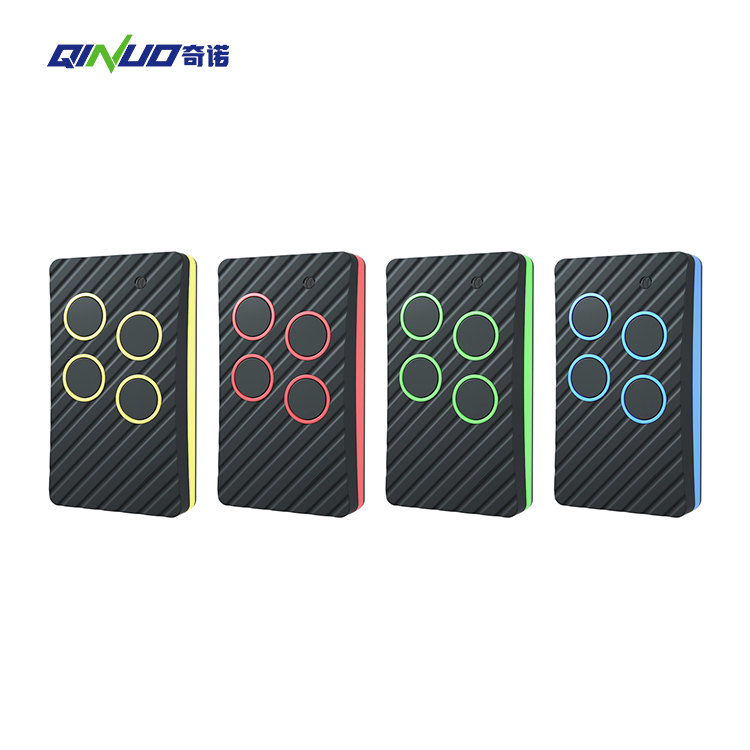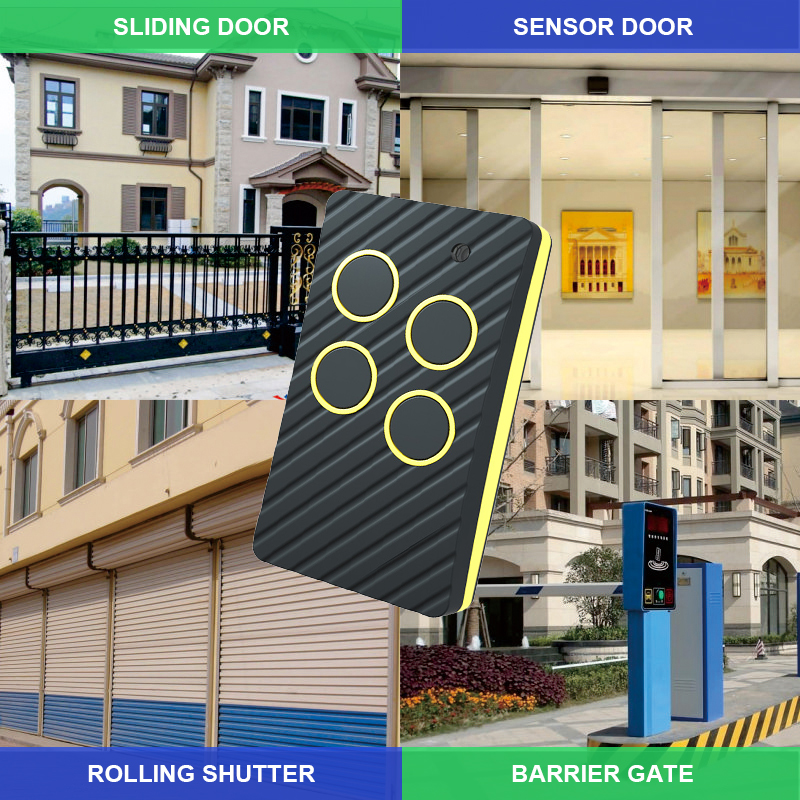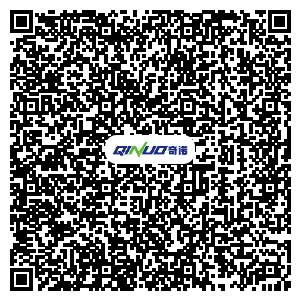Introduction
As technology advances rapidly, remote controls have become an indispensable part of our daily lives. From car remote keys to garage door remotes and home appliance remotes, they are everywhere. However, with widespread use, the security issues of remote controls have also become increasingly prominent. Especially in the fields of car and garage door remotes, the risk of signal cloning or interception cannot be ignored. To address this issue, many modern remote controls have started adopting advanced encryption technologies, among which rolling code technology is the most common and effective.
This article will explore in detail whether remote controls use advanced encryption technologies, particularly rolling code technology, and how this technology prevents signal cloning or interception. We will comprehensively analyze the principles, applications, advantages, challenges, and future development directions of rolling code technology.

Principles of Rolling Code Technology
Rolling code technology, also known as hopping code technology, is a dynamic encryption method. It prevents signal cloning or replay by sending different codes each time. Specifically, rolling code technology is based on a predefined algorithm and a synchronized counter. Each time the remote button is pressed, the code changes. The receiver and transmitter share a key and algorithm, ensuring that only paired devices can correctly decode the signal.
1. Generation of Rolling Codes
Rolling codes are typically generated using an encryption algorithm such as AES (Advanced Encryption Standard) or SHA (Secure Hash Algorithm). The generation process involves the following steps:
Initialization: The transmitter and receiver first synchronize an initial value (seed) and a key.
Counter Increment: The counter value increases with each button press.
Encryption Operation: The counter value and key generate a new rolling code through the encryption algorithm.
Signal Transmission: The generated rolling code is sent to the receiver via a wireless signal.
2. Verification of Rolling Codes
Upon receiving the signal, the receiver performs the following steps to verify the rolling code:
Synchronize Counter: The receiver maintains a counter synchronized with the transmitter.
Decryption Operation: The receiver uses the same key and algorithm to decrypt the received rolling code.
Verify Code Value: If the decrypted code matches the expected value generated by the receiver, the signal is valid, and the corresponding operation is executed.
Through this process, rolling code technology ensures that each signal is unique and cannot be reused even if intercepted.

Applications of Rolling Code Technology
Rolling code technology is widely used in various remote control devices, especially in fields requiring high security.
1. Car Remote Keys
Car remote keys are one of the typical applications of rolling code technology. Modern car remote systems generally adopt rolling code technology to prevent theft and illegal duplication. When the car owner presses the button on the remote key, the rolling code is sent to the in-car receiver, which decodes and executes the corresponding operation, such as unlocking or starting the engine.
2. Garage Door Remotes
Garage door remotes are another important application area of rolling code technology. The security of garage doors is directly related to the safety of household property. Rolling code technology effectively prevents signal cloning or replay attacks, ensuring that only authorized remotes can open the garage door.
3. Home Appliance Remotes
Although home appliance remotes have lower security requirements, rolling code technology is also applied in some high-end smart home systems. This technology is used in remotes for televisions, sound systems, and air conditioners to prevent signal interference and accidental operations.
Advantages of Rolling Code Technology
1. High Security
The biggest advantage of rolling code technology is its high security. A new code is generated with each button press, making the signal difficult to clone or intercept. Even if an attacker intercepts the signal, it cannot be reused as the next code will be different.
2. Prevention of Replay Attacks
Replay attacks are a common security threat where an attacker intercepts and replays a legitimate user's signal to deceive the receiver. Rolling code technology effectively prevents such attacks by dynamically changing the codes, as repeated signals will not be accepted by the receiver.
3. Ease of Implementation
Rolling code technology is based on existing encryption algorithms and synchronization mechanisms, making it easy to implement in current remote control systems. Its implementation cost is relatively low and does not require special hardware support.
Challenges of Rolling Code Technology
Despite its numerous advantages, rolling code technology also faces some challenges in practical applications.
1. Synchronization Issues
Synchronization between the transmitter and receiver is crucial for rolling code technology. If synchronization fails, the receiver will not be able to correctly decode the signal. This may happen if the remote control is unused for a long time or after battery replacement.
2. Interference and Packet Loss
Wireless signals are susceptible to environmental interference, which may lead to signal loss or transmission errors. To address this issue, many systems design retransmission mechanisms, but this also increases system complexity.
3. Security Vulnerabilities
Although rolling code technology significantly enhances security, potential vulnerabilities still exist. For example, attackers might analyze multiple signals to infer the rolling code generation rules. Therefore, it is necessary to further enhance the complexity of encryption algorithms and key management.
Future Development of Rolling Code Technology
As technology advances and security demands increase, rolling code technology is also continually evolving. The future may see the following trends:
1. Stronger Encryption Algorithms
Future rolling code technology will adopt more powerful encryption algorithms, such as quantum encryption, to further enhance security. This will make it even more difficult to crack and infer rolling codes.
2. Intelligent Synchronization Mechanisms
To solve synchronization issues, future rolling code technology may adopt more intelligent synchronization mechanisms, such as automatic resynchronization and self-healing functions. This will improve system stability and user experience.
3. Multi-Factor Authentication
Combining rolling code technology with multi-factor authentication, such as biometric identification and smartphone verification, will further enhance security. This combination will make remote controls even harder to clone or intercept.
4. Cross-Device Interoperability
Future rolling code technology will not be limited to single devices but will achieve cross-device interoperability. Different remote control devices can share rolling code technology, achieving higher levels of security and convenience.
Conclusion
Rolling code technology, as an advanced encryption method, effectively prevents remote control signals from being cloned or intercepted. By generating different codes each time, it ensures the uniqueness and security of the signal. Despite challenges such as synchronization, interference, and security vulnerabilities in practical applications, these issues will gradually be resolved with continuous technological progress.
The widespread application of rolling code technology in car remote keys, garage door remotes, and high-end home appliance remotes has greatly improved the security and user experience of these devices. In the future, with the development of stronger encryption algorithms, intelligent synchronization mechanisms, multi-factor authentication, and cross-device interoperability, rolling code technology will have broader application prospects.
For remote control manufacturers and users, understanding and applying rolling code technology is a crucial step in enhancing security and preventing signal cloning or interception. Through continuous innovation and optimization, rolling code technology will bring more security and convenience to our lives.

-
Office ViewQinuo Electronics Co., Ltd.was founded in 2009,it is a high-tech company that integrated R & D, manufacturing, sales and service for 15 years,which is mainly specialized in providing sensors of automatic door, control system of door and gate, car key remote, auto parts etc. The company currently has four independent brands: U-CONTROL, U-SENSORS, U-AUTOGATES and U-AUTOKEYS.
-
got questions? call us
+86 13960286508
-
fax :
+86 595 22901208 -
Email :
[email protected]
-
address
- No.991 Xingxiu Road,Taiwanese Investment Zone, Quanzhou, Fujian Province,P.R.China











